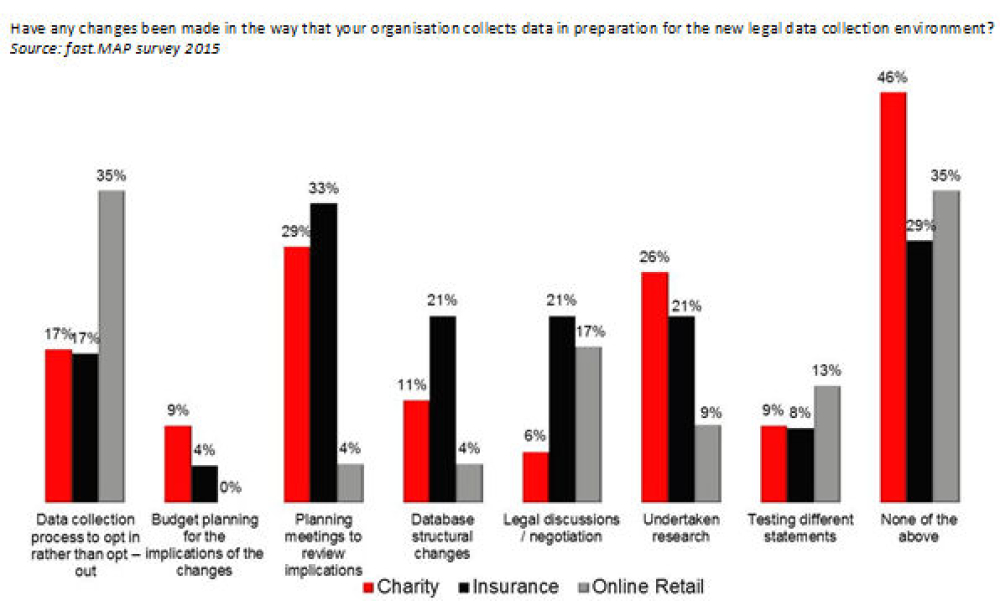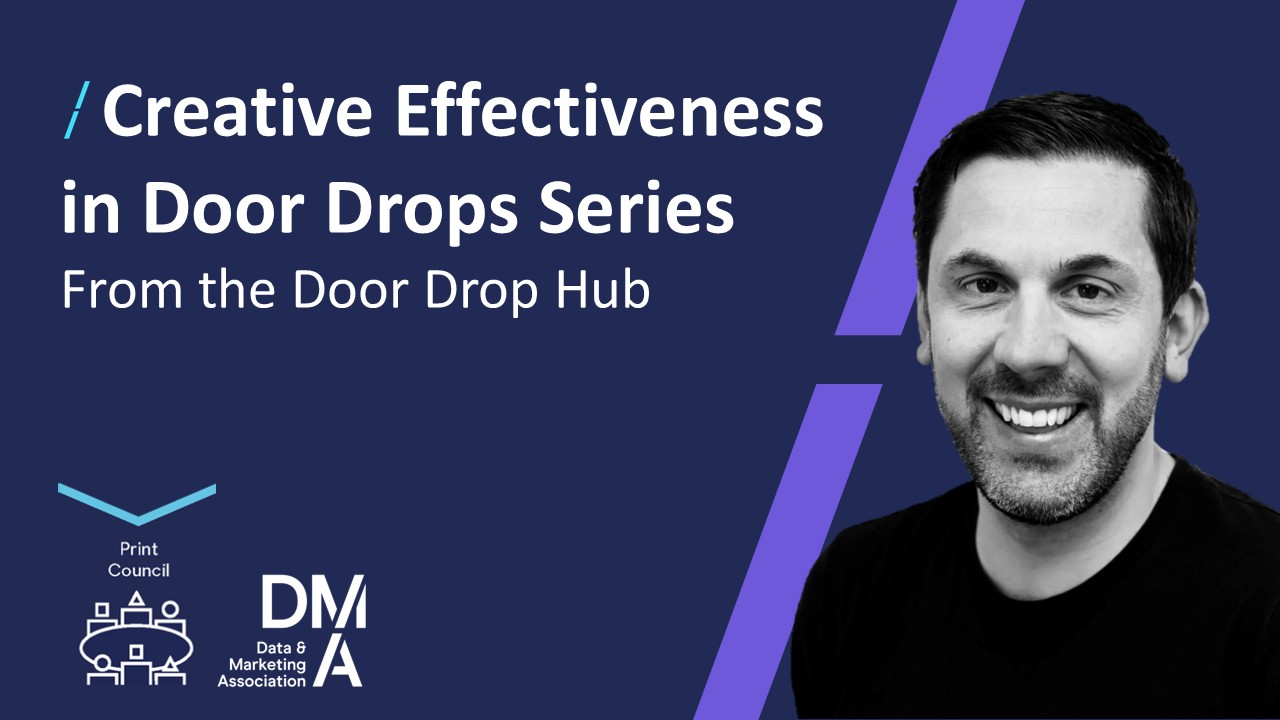Marketing consent is disappearing faster than a fart in a fan factory
18 Jun 2015

Regardless of when and what the new EU data legislation turns out to be, the direction of travel (to use a posh ICO phrase) is towards more explicit consent.
The abused privilege of almost limitless consent to market is disappearing, to quote Charles Dickens “like the shadow thrown by a passing cloud” or more colloquially “like a fart in a fan factory”.
Most marketers know this (68% expect the EU changes to fundamentally or importantly affect their organisation; Source fast.MAP Data Elephant Events 2015), but very few are tackling this rather large elephant in the room.
This chart illustrates some of the fundamental changes that need to happen to prepare for the new reality.
Yet few have even started to make any changes. It appears that the charity sector is least prepared, but even the litigious insurance sector is moving far too slowly - only a third of companies have had planning meetings to review the implications (see chart).
Perhaps the first and arguably most important task is for marketers to wake up, take their heads out of the sand and open their eyes. Most marketers are aware of the politics, the surrounding gloom and caution, but few are actually rolling up their sleeves and getting stuck in.
The first step is to understand the environment and then plan for it. There are many steps in the process of embracing change. Here are some of the most important:
fast.MAP’s research results indicate most companies are failing to recognise there is a problem, let alone analyse and measure it. Does this stem from organisational inertia? This chart illustrates my rather quirky view on some of the characters which exacerbate the inactivity syndrome – although of course, all of fast.MAP clients are by definition Pragmatic Leaders!
For those pragmatic leaders who recognise marketing consent is the new battleground, the first task is to measure consent levels.
In the same way Professor Merlin Stone in 1990 introduced the concept of measuring a customer’s value (Customer Lifetime Value), a pragmatic leader should now encourage his or her organisation to place a value on consent. To help you to demonstrate your pragmatism, fast.MAP has developed (fast.MAP’s free IPV calculator) which measures a brand’s Incremental Permission Value and starts the process of improving the organisation's chances to triumph on the consent battle-ground.





This is real wake-up call insight David, well done and thank you!
To build on your message I believe your warning shot across the marketing bow is not actually just a marketing responsibility; it must be embraced by all of C-suite for the following reasons:
1) It contextualises the ‘sexiness’ of data within a business model…
… by articulating why data is crucial and fundamental to managing customer experience, retention value
2) It challenges and guides Marketing and Finance on how to work together
3) It frames the need for collecting & requesting consent for the ‘right’ data for your brand – what we call the ‘data information ladder’, in order to prioritise data input and analysis.
4) It expresses the purpose of a dynamic database of people consuming your product as both a value-creating marketing process and a valuable balance sheet asset.
The trick of course is creating the elegant mechanics that make people want to be involved with your brand’s lifestories.
This is how the return from marketing investment becomes sustainable, surely a great Board message for shareholders or stakeholders?
T.B.D.A Limited (True Business Data Activation)
Managing Director